

Last week, when we visited Alto Lucero, we passed the town of Almolonga on our way. Esme told me back then that she had visited that town once. The surroundings looked interesting enough to reward it with a nice walk, so today we decided to go to Almolonga.
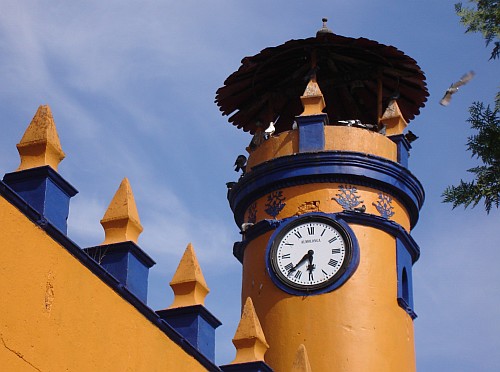
We took the bus from our house to Plaza Cristal and then we walked to the bus stop. Often there are taxi drivers around, on the look out to get 4 or 5 people for a ride in the same direction (colectivo). It's a bit more expensive compared to a bus trip, but still reasonable. And after we had bought some drinks a and food, we were able to find us a colectivo that would take us to Almolonga for 30 pesos (about 2.80 USD) each. The price was a bit high, we were both expecting to pay around 25 pesos each, but it was a fine day, so we didn't want to make a big deal out of it.
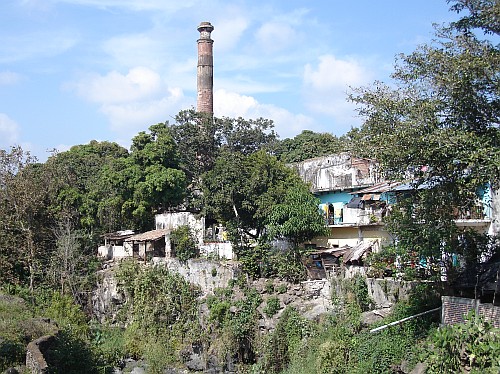
After a while the taxi arrived in the town of Almolonga. We walked into the direction of the town square. I took several photos of the church tower, which was used by pigeons as a place to rest. We crossed a bridge, and I took a photo of a large chimney, probably belonging to a sugarcane factory.
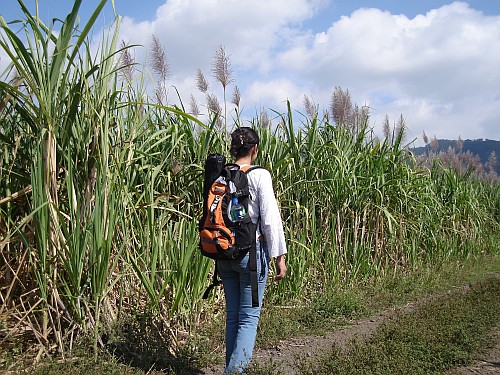
We passed a soccer field, and a match was taking place under the burning sun. Shortly after we left the last houses of Almolonga behind us, and were walking on a small road with sugarcane growing to the left and the right.
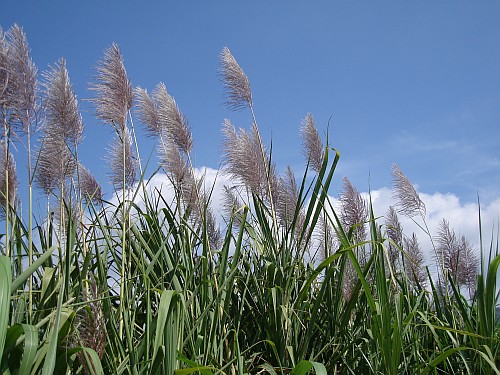
In the distance we saw hills. One lower hill had ruines on it, and we decided to see if we could get closer to check those out. We entered a pasture, and walked into the general direction of the ruines.
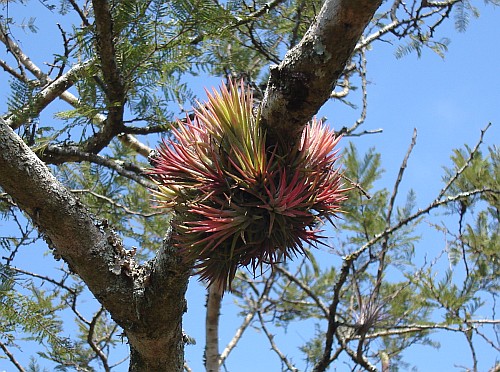
Under an acacia with a nice cluster of red colored air plants (Tillandsia sp.) Esme held a short break, while I tried to get close enough to a big spiny lizard (Sceloporus species) to take a photo. But this was harder then I thought, and even after a several attempts I couldn't get a good close-up. The big lizard was too skittish.
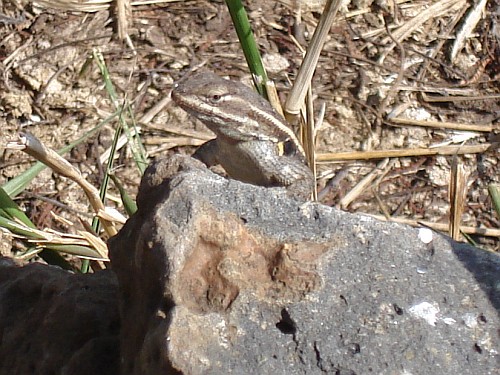
After I gave up getting a good photo of the lizard, I walked in the direction of the hill with ruines to see how we could get there. Then Esme called me. I walked back to her, and it turned out that she had a big praying mantis on her leg.
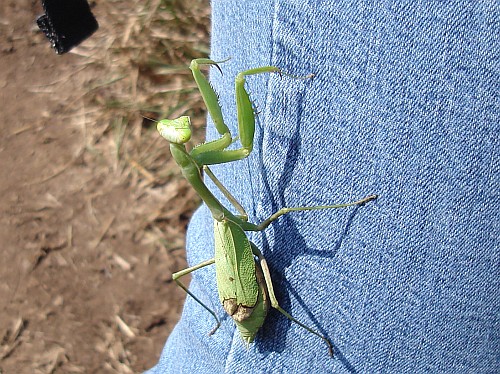
I carefully removed the animal from her leg, and put it in the high grass nearby. This was the first time I saw a praying mantis this big in Mexico. We had seen several praying mantids on other walks, but not even close to the size of this one.
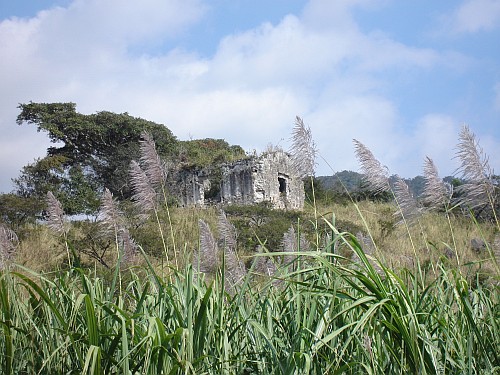
The road we followed ended in a gate, and from the looks to a place with people living. So we decided to walk to our left, and see if we could find another road leading to the ruins on the hill.
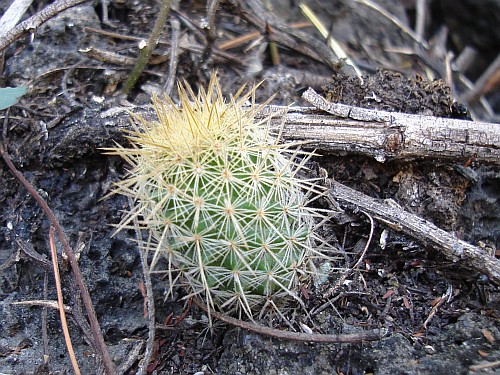
Since the sun was burning relentlessly, we decided to have another break in the shadow under a tree. While Esme was resting, I set up the tripod and tried to make a good photo of the ruins on the hill by zooming in to the maximum. Esme spotted a tiny cactus nearby, growing in the shadow of the tree on top of a volcanic rock.
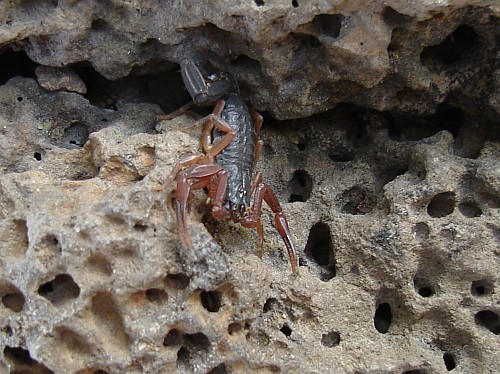
After our break, we kept walking in the same direction, but didn't find an easy way to reach the ruines, other then crossing a few meadows with a lot of bushes and high grass. So we decided to walk back to the road we had originally followed and walk back to a fork in the road, and try the other branch.
When we reached the fork in the road I looked a bit around, and then I got a good scare, something big suddenly left a small bush, and ran into a nearby sugarcane field. It looked like a 30 cm long snake with feet, so I guess it was a really big lizard, probably an iguana.
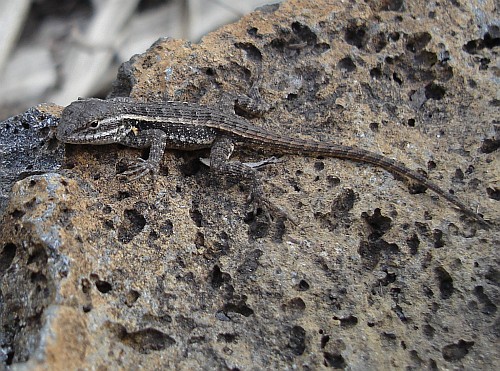
We followed the road into the direction of the hills, the ruines were now more to our right. I saw several volcanic rocks underneath a tree, and looked under some of them. One was used by a juvenile scorpion, Centruroides gracilis. When I turned the stone a bit more, I saw scorpion run away. Esme found it back, it was hiding in a small crack in the stone itself.
Read the second part of this blog entry in Rain frogs and a tarantula.